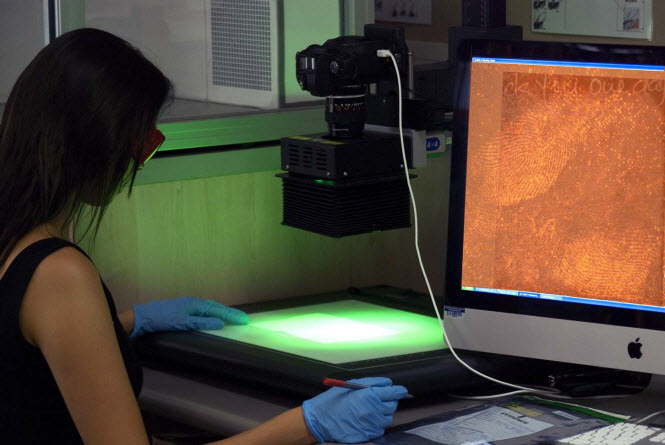 A Yolo County Jury went out just after lunch and came back before 5 pm to convict Oscar Barrientos of two counts – one of first degree burglary and one of grand theft.
A Yolo County Jury went out just after lunch and came back before 5 pm to convict Oscar Barrientos of two counts – one of first degree burglary and one of grand theft.
Despite these convictions, Mr. Barrientos still likely faces probation, given his age at the time of the crime and his lack of priors. Nevertheless, his conviction was based entirely on circumstantial evidence, most of the pieces extremely flawed to the point where Deputy DA Sulaiman Tokhi suggested that the defense would be that he is the most unlucky person around.
The lady said no and thought it to be an odd question, considering it was a school day just before noon and her 11-year-old daughter would not be home.
As the lady left for work, she left the bathroom window partially open, and walked out surprised to see the girl still out there in a red SUV. She also saw a young man with facial hair in the SUV, sitting in the passenger seat.
She was called home later that day to find that her home had been burglarized. Police were able to lift four fingerprints from the window the burglars entered, and one of those, a partial left palm print, was found to be a match with Oscar Barrientos.
West Sacramento Police Detective Michelle Tate took the photo to the woman and she apparently identified the man in the photo as the man she saw outside of her house.
Detective Tate called the defendant and he returned her call and agreed to go to the police station to meet with the detective in January 2009.
He denied everything, including having gone to West Sacramento and knowing anyone in West Sacramento. DDA Tokhi argued that he was lying at this point, that he was seen in West Sacramento in May of 2009 and his girlfriend lived on the same street as the home of the victim.
That is the sum total of the prosecution’s case.
Public Defender Amber Poston attacked the crux of the case, however. She argued in her opening statement that while this case looked like a perfect diamond, closer inspection reveals numerous flaws.
First, there were no prints found inside of the house. Second, the Detective made no effort to canvass the neighborhood looking for the red SUV.
Moreover, the photo identification was improper. Detective Tate called the victim and told her she was bringing a photo of the person whose prints were found on the outside window. She only brought a single photo and had completely contaminated the eyewitness evidence.
Despite this, the victim testified that she was only 7 or 8, out of 10, sure of the identification and as we previously reported, she was unable in the previous trial to identify him in the courtroom as the person she saw outside of her home.
One of the more interesting questions would be, given the last trial and the mistrial, how the victim would testify. In the previous trial, she stunned DDA Tokhi by failing to identify Mr. Barrientos in court as the man she had seen outside of her home.
Would she be coached? No, she testified as she had previously. However, this time the DA was prepared for the response and sought to minimize it by arguing that the passage of time and the changing appearance played a role and that the 80 to 90 percent identification originally was the most important evidence.
Among the more interesting exchanges was the testimony of Department of Justice analyst Kumar who had performed the analysis of the fingerprints. This was the key evidence in the case that conclusively linked Mr. Barrientos to the burglarized home.
However, as Public Defender Amber Poston would demonstrate, fingerprint evidence is not the rock-solid scientific evidence that many would claim.
There are two key problems with the “science.” First, while the computer pulls up possible matches, a human must make the identification. Second, in the US there is no accepted standard for fingerprint analysis.
Mr. Kumar told the jury that the way they do it at the DOJ is that they use a standard of 8 points of identification (other nations use 16 points). He found 21 points of identification here and proclaimed that he had no doubt that the known print and the latent print lifted from the window were left by the same individual.
He also told the jury that another analyst has to verify the work and if there is a discrepancy, a supervisor has to examine it.
Under cross-examination he testified that he has never had another analyst disagree with his work. That he has never disagreed with another analyst’s work. That he was not aware of any disagreements ever at the DOJ about the identification of fingerprints.
He testified that the error rate is zero, according to his knowledge, and that his office has never made an error.
Ms. Poston then brought up research performed by the National Academy of Sciences, which classifies fingerprint analysis, especially that in the US, as flawed.
There is, of course, the famous case of the Madrid Subway bomber, where a fingerprint falsely brought up the identity of a US man as a possible suspect, which had to be discarded after it was proved he had never been out of the country.
She brought up a study where there were 10 known samples that were sent to experts across the globe and they were asked to identify the print. There was no consistency, across the board.
Other studies have shown a poor regard for the US not having a national standard. There are a number of known cases of wrongful ID where individuals have been exonerated through DNA testing.
Another report concluded that fingerprint identification should not be called a science, and furthermore, undermining the witness’ argument, the claim that there is no error rate is not based in science. All science has a known error rate.
In a response to a jury question, we learned that the DOJ does not do an independent review. The second analyst examines the identification that the first analyst has made, rather than doing the analysis from scratch.
The defense also questioned whether Mr. Barrientos could have been in West Sacramento at this time. Several family members testified to the cancer that Mr. Barrientos’ father had in October 2008 and argued that Mr. Barrientos was taking case of his brother’s two-year-old child all of October, because his mother, who normally cared for her grandchild, was helping with his father.
Detective Tate came back to testify that when she called in January 2009, Mr. Barrientos’ sister said that he just slept there and that she would give him the message. Mr. Barrientos would call back 15 minutes later.
In his closing arguments, Mr. Tokhi tried to restore the confidence in Mr. Kumar’s fingerprint testimony. He argued that Mr. Barrientos must be the most unlucky man alive to have been pulled up a match for the fingerprint as he knows people on the same block, he has been seen there, he lies about it, and that Mr. Kumar with 18 years of experience has no doubt about the identification.
Then he focused on what he called the Big Lie. When the defendant came in to talk to Detective Tate he first said that he didn’t know what the hell she was talking about. Then he told her he had never been to West Sacramento and that he did not know anyone from West Sacramento.
A few months later he was seen a few blocks away from the scene of the crime and his girlfriend lived in West Sacramento.
Mr. Tokhi also attempted to minimize the lack of certain identification, based on three years’ passage and differing appearances.
In her closing, Ms. Poston hammered again on the lack of scientific foundation behind fingerprint analysis. She argued that, given the fact that humans have to make the identification, there is no possibility that there can be no errors ever, and therefore Mr. Kumar’s testimony and knowledge is questionable.
During his closing statement, Mr. Tokhi made much about the fact that Mr. Barrientos launched into a profanity-laced defense of himself when he was interviewed by Detective Tate. He argued time after time she gave him possible outs, and he never took those outs.
However, Ms. Poston would point out first the flaws in the photo line up, and then pointed out that the first question was asking him about the burglary and asking what he knew about it. She argued this was an interrogation not an interview. It lasted 15 minutes and the detective used every technique she had, but the defendant remained adamant that he had nothing to do with it.
The detective, Ms. Poston argued, was not giving him outs, she was trying to get him to confess.
In his rebuttal, Mr. Tokhi pointed out that, despite all of the claims to the contrary, there was no re-testing done by Ms. Poston with the fingerprints. Ms. Poston would object that this was an improper burden shifting, it was not the defense’s obligation to re-test this evidence, that she only has the burden of taking the known record and calling it to question.
Judge Mock, however, overruled her on this key point.
The sum total of the prosecution’s case is that Mr. Barrientos was seen in the car out front prior to the burglary. There are problems with that evidence as the woman was only partly sure of the identification and even her daughter, who was doing the translating, acknowledged that she had said she could not clearly see the face and was only 5 out of 10 sure about the identification. However, each time she testified that number went up.
There is the fingerprint outside of the window which Mr. Tokhi argued was enough to prove entry.
There was the lie that Mr. Barrientos told about not having been to West Sacramento and the fact that his girlfriend was on the same block.
But what there is not is evidence that Mr. Barrientos was in the residence. There were no fingerprints found inside. None of the stolen objects were ever recovered. So there is no evidence that Mr. Barrientos had illegally acquired or taken property.
Mr. Tokhi may be correct about the law with regard to burglary, which is merely the entry into a dwelling with the intent of committing a crime. However, Judge Mock outside the presence of the jury said that the fingerprint does not matter if they can show Mr. Barrientos was not in West Sacramento.
A lot was made about the comment by Detective Tate that the sister said that he just slept there. Mr. Tokhi, in his closing statement, also argued that the mother did not say that she had been taking care of the father.
But no one pointed out the obvious, that the family had testified that the surgery took place in October and that he spent all of October taking care of his brother’s child. Detective Tate did not call until January.
As Ms. Poston argued, there are two explanations here. One is that he is the most unlucky man. The other is that there simply is just not enough evidence here – in part due to shoddy police work – to show that he had entered the residence and acquired the property.
—David M. Greenwald reporting






Have your palm print on the window of a burglarized house doesn’t seem circumstantial to me. Especially when the suspect denies ever being there.
Shocking that a defense attorney would argue against the “science” of finger prints. Even thought she is wrong she still had to do it. It’s not like the pulled a print from some guy in Florida and drug him back here.
She’s not wrong at all on fingerprints overall, you should read the national foundation.
Bottom line for me is that you can’t tie him to burglary. You may be able to place him at the window, if you buy the partial print analysis, but that doesn’t mean he went inside and it doesn’t mean he took something (grand theft charge). There are just a lot of holes in this.
Let’s see:
Prosecution’s case –
1) Partial palm print found on window identified as defendant’s (21 points of identification, even tho the highest requirement in the world is 16 points)
2) 70% ID defendant was seen in a car within a few hundred feet of crime scene the same day
3) Defendant lied about his girlfriend living within a block of the crime scene/claimed he had never been in the neighborhood around the crime scene
Defense’s case –
1) Fingerprint analysis is a flawed science
2) Photo ID was improper
3) Defendant unluckiest man in the world
The defense’s case would have been a lot stronger had they run their own fingerprint analysis and proved the evidence wrong. But the defense chose not to, which is their right, but were stuck with their unconvincing arguments… so the jury decided the defendant was guilty beyond a reasonable doubt.
I don’t know if an appellate court would object to the photo ID part of this case and remand it for retrial, or just rule it harmless error. It seems to me the case hinged mostly on the palm print evidence, and the fact that the defense chose not to run their own test. While it is true the defense was not required to do so, the jury was free to draw whatever conclusions they did from the fact that the defense elected not to do their own fingerprint analysis.
oh come on now. they can’t all be innocent and the victim of D.A. malfeasance. a palm print in the house. a connection through someone between the defendant and the house. the defendant saying he’d never even been in west sacto. on this one Mr. Tokhi and his office and much more importantly the jury seems to have gotten it right. Ms. Poston did, as always a superlative job. It was as we say what it was.
[quote]“Nevertheless, his conviction was based entirely on circumstantial evidence….(The palm print) was the key evidence in the case that conclusively linked Mr. Barrientos to the burglarized home”[/quote]One has to assume the defense DID do its due diligence and DID analyze what you’ve rightly called the critical fingerprint evidence. If Mr. Barrientos’ prints do not match the one from burglary scene, I figure Ms. Poston would have brought up that point in court–rather than tossing out generalized fingerprint reliability arguments*.
[quote]“…she [i]apparently[/i] identified the man in the photo as the man she saw outside of her house.”[/quote]Apparently? What do you mean here–did she or didn’t she? It sounds as though she quite positively identified (80-90% sure) someone who claims he never, ever had been in that part of the county, yet who happened to leave his identifiable print when he was breaking in to the house. Ms. Poston’s client left her very little room to raise reasonable doubt in any part of the case.
[quote]“…most of the (evidence was) extremely flawed to the point where Deputy DA Sulaiman Tokhi suggested that the defense would be that he is the most unlucky person around.”[/quote]Maybe you missed Mr. Tokhi’s sarcastic point–that the totality of the evidence equaled such an overwhelming case against Mr. Barrientos that he wouldn’t be able to come up with anything close to a believable, credible defense. I think Mr. Tokhi’s was suggesting exactly the opposite of what you inferred.
I’m really troubled with the single-photo ID (used in conjunction with authorities informing the victim of the photo’s here: I thought we were well past that unfair approach–at least, our laws are. Do you have any misgivings about the accuracy of your reporting on this matter? It just seems this kind of biased identification wouldn’t have been approved by the judge.
But I just don’t understand how you see this as a weak, entirely circumstantial prosecution case with all the direct evidence I’ve just noted above, and corroborated by the powerful circumstantial evidence you want the jury to ignore.[quote]“To be frank, there appears to be very little chance that they will gain a conviction in this case. The prosecution ought to allow for a misdemeanor plea of petty theft and call it a day.”[/quote]It appears you missed something in your earlier coverage of this case. Was there no clarification of the “line-up photo” issue this time around? Was there no mention of any connection between the defendant and the red mystery car or the pajamaed mystery woman? [quote]“Despite these convictions, Mr. Barrientos still likely faces probation, given his age at the time of the crime and his lack of priors.”[/quote] Are you sure this isn’t also wishful thinking on your part. How old is the guy? Does he have a clean record except for this? Is this the first time he lied to authorities? Will he be expressing remorse for his crimes?
____________________
*The Mayfield case is a poor one for her to use to discredit fingerprint “science” for the science’s experts had accurately [u]excluded[/u] Mayfield before he even was arrested. He actually was one of two dozen or so people being investigated on the supposed basis of the same fingerprints.
Rather, this is an example of misuse of the criminal justice system by the Justice Dept. and FBI in the name of national security. Mayfield wasn’t arrested because of poor fingerprint science, but because our government agents choose to lie about the prints.
Elaine:
You missed:
1. Defendant’s family claims he was with them
2. No evidence Defendant was in the home
3. No evidence Defendant stole property, never recovered property, never linked it to defendant
4. Police never found red blazer
Just saying:
One cannot assume that the defense had the resources to do what you suggest.
I say apparently because in court she did not recognize him. SHe was unsure and her story kept changing. She told her daughter she was 50% sure, she told the police 80% even with the prompting.
THe problem is that the totality of the evidence does not establish that the defendant ever entered the home or had direct involvement in stealing its contents.
“Do you have any misgivings about the accuracy of your reporting on this matter? It just seems this kind of biased identification wouldn’t have been approved by the judge. “
Sorry but that was what happened and Tokhi even defended the tactic saying that the photo was not the evidence that identified Mr. Barrientos, the print was.
“It appears you missed something in your earlier coverage of this case. Was there no clarification of the “line-up photo” issue this time around? Was there no mention of any connection between the defendant and the red mystery car or the pajamaed mystery woman? “
I obviously did miss something. I think had the original trial gone forward the prosecution was dead. Instead they had a few months to counter the bombshell that was dropped on them in the last go around. They changed up the order of the witnesses, putting the police first and the victim last. There were a number of changes that Tokhi made that were impressive.
“Are you sure this isn’t also wishful thinking on your part. How old is the guy? Does he have a clean record except for this? Is this the first time he lied to authorities? Will he be expressing remorse for his crimes? “
It’s what I was told. He was 18 at the time, no prior, no previous history.
[quote]Elaine:
You missed:
1. Defendant’s family claims he was with them
2. No evidence Defendant was in the home
3. No evidence Defendant stole property, never recovered property, never linked it to defendant
4. Police never found red blazer[/quote]
1. I don’t think this would be seen as reliable testimony…
2. This isn’t evidence, its a conclusion
3. This isn’t evidence, its a conclusion
4. This isn’t evidence, its a conclusion
I think you are correct that the jury did not view it as reliable but 2-4 are evidence.
Is there any evidence that lack of evidence is conclusive proof of lack of non-evidence?
Absence of evidence is evidence of absence?
[quote]Absence of evidence is evidence of absence?[/quote]
Absence of evidence is a legal conclusion…
Landy Black last night pointed out the flaw in my point. Absence of evidence is not itself evidence, but it is part of the point that the defense was making, the lack of finger prints, the lack of finding the stolen property. Since the standard is beyond a reasonable doubt, I still believe it is questionable that they proved the defendant entered the home and stole things.
You forgot to mention the jury claimed to have felt threatened during the a recess break of the 2nd trial and brought it to attention to the whole court room including other jurors, and said one of Mr. Barrientos neighbors who had came to support during trial was taking pictures of certain jury members who is a retired Correctional Officer, and was not taking pictures, which to me resulted in a biased jury.